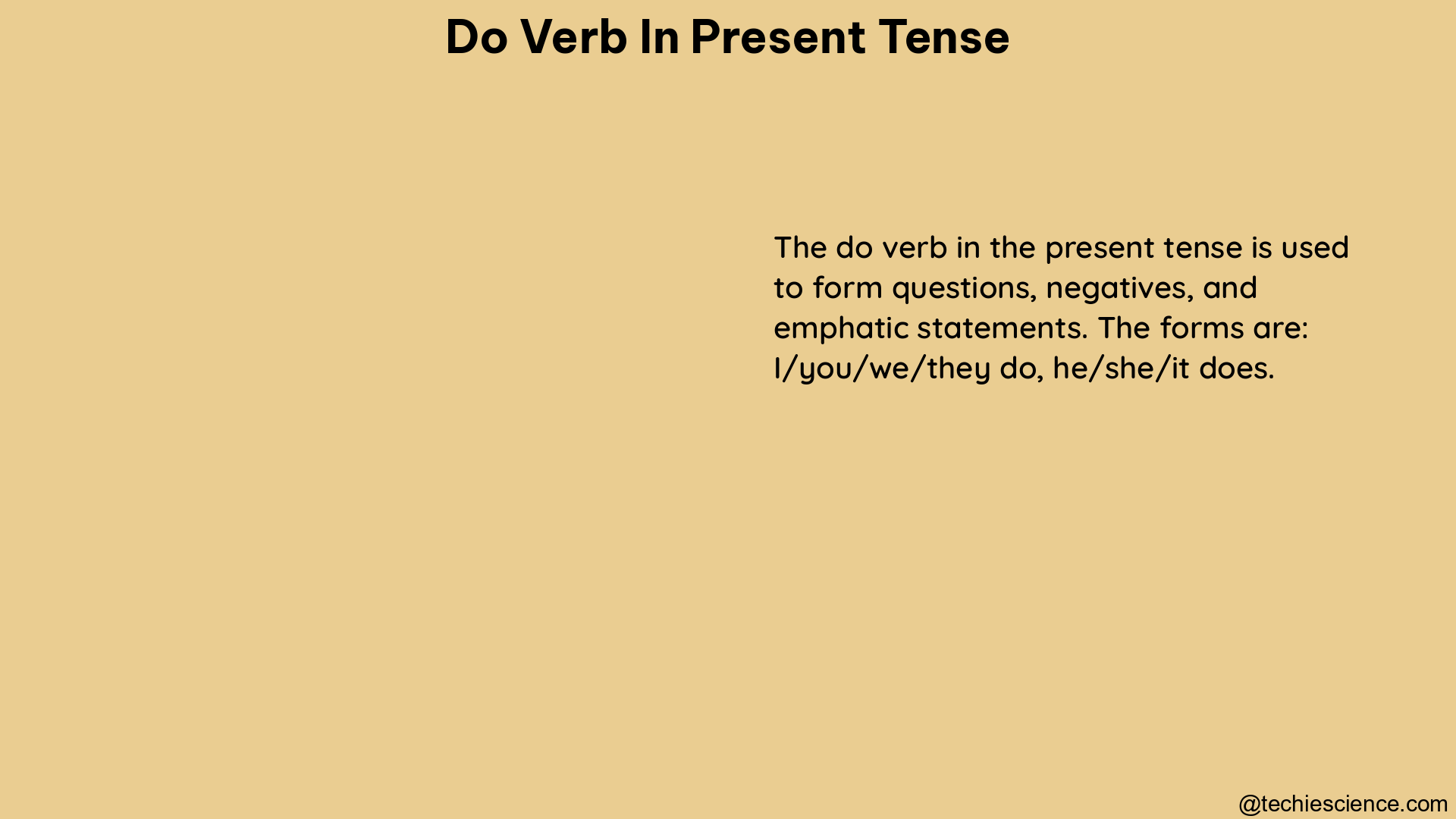The verb “do” is a versatile and essential part of the English language, serving as both a main verb and an auxiliary verb. Understanding the various forms and usages of “do” in the present tense is crucial for effective communication and mastering the English grammar. This comprehensive guide will delve into the intricacies of the present tense of the verb “do,” providing you with a thorough understanding of its applications.
Forms of “Do” in the Present Tense
The present tense of the verb “do” has three primary forms:
- Base Form: do
- Third-Person Singular: does
- Present Participle: doing
These forms are used in different contexts and sentence structures, as we will explore in the following sections.
Usage of “Do” as a Main Verb in the Present Tense

When “do” functions as a main verb, it expresses various actions, such as performing, achieving, or creating something. The usage of “do” as a main verb in the present tense can be divided into three categories:
Positive Form
- I do my chores every day.
- You do an excellent job at work.
- He/She/It does the laundry on Saturdays.
- We do our best to succeed.
- You do not need to worry about it.
- They do not like the new policy.
Negative Form
- I don’t do my homework on time.
- You don’t do the dishes after meals.
- He/She/It doesn’t do the grocery shopping.
- We don’t do any extracurricular activities.
- You don’t do your part in the team project.
- They don’t do their fair share of the work.
Question Form
- Do I do the right thing?
- Do you do your exercises regularly?
- Does he/she/it do the research for the presentation?
- Do we do enough to support the community?
- Do you do your best in every task?
- Do they do their job efficiently?
Usage of “Do” as an Auxiliary Verb in the Present Tense
In addition to its use as a main verb, “do” can also function as an auxiliary verb. In this capacity, “do” is used to form emphatic statements, questions, and negatives.
Emphatic Form
- I do like to travel during the summer.
- You do understand the importance of this project.
- He/She/It does speak multiple languages fluently.
- We do enjoy spending time with our family.
- You do have a valid point.
- They do have a lot of work to complete.
Grammatical Specifications
When using the verb “do” in the present tense, it is essential to adhere to the following grammatical specifications:
Subject-Verb Agreement
The verb “do” must agree with the subject in number (singular or plural). For example, “I do” and “they do” are correct, while “I does” and “they does” are incorrect.
Tense Consistency
The verb “do” should be used consistently in the present tense throughout a sentence or paragraph. Mixing present and past tense forms can lead to grammatical errors.
Modal Verb Usage
The verb “do” can be used in conjunction with modal verbs, such as “can,” “could,” “may,” “might,” “shall,” “should,” “will,” and “would,” to form complex verb phrases. For example, “I can do my homework,” “You should do your best,” or “They might do the project together.”
Theoretical Explanation
The verb “do” is an irregular verb in the English language, meaning it does not follow the standard rules for verb conjugation. Its unique forms and versatile usage make it an essential component of effective communication.
As a main verb, “do” expresses various actions, while as an auxiliary verb, it is used to form questions, negatives, and emphatic statements. Understanding the different forms and applications of “do” in the present tense is crucial for mastering the English language and communicating with clarity and precision.
Reference Links
Hi… I am Sowndharya Jagadeeswaran, a university rank holder in M.A. English Literature. I have also done my master’s in Business Administration. Inquisitive as I am, my interest in action-oriented research helped me publish research papers in reputed journals. Now, as a career, I am an instructor where I teach young and adorable students the intricate technicalities of Public Speaking and Creative Writing. I also enjoy writing articles on topics I specialize and research in.
You can connect with me through LinkedIn.-